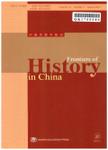Restituting Church Buildings and Negotiating Church Factions: Missionary Mapmakers and the Making of Local Networks (1712-1716)
Restituting Church Buildings and Negotiating Church Factions: Missionary Mapmakers and the Making of Local Networks (1712-1716)作者机构:Faculty of Arts University ofLeuven B-3000 Leuven Belgium
出 版 物:《Frontiers of History in China》 (中国历史学前沿(英文版))
年 卷 期:2014年第9卷第4期
页 面:489-505页
学科分类:01[哲学] 0101[哲学-哲学] 010107[哲学-宗教学]
主 题:cartography Rites Controversy Kangxi atlas Jesuit missionaries MEP,early Sino-European contacts Huangyu quanlan tu
摘 要:At the turn of the 18th century, the Kangxi emperor initiated a large project to map the vast territories of the Qing. The land surveys that ensued were executed by teams of Qing officials and European missionaries, most of them French Jesuits first sent to China in 1685 and actively supported by the French crown. Early 18th century Jesuit publications foster a much-heralded claim that these missionary-mapmakers drew on their status of imperial envoys during the surveys to locally advance the position of the Catholic church. This article strives to explore the format/on of such local networks by these missionaries as they passed through the cities and towns of the Chinese provinces. On the basis of archival material, details emerge of contacts with local Qing administrators and Chinese Christians, and of attempts to purchase and recover local churches. This is then discussed against the background of the Rites Controversy, in an attempt to evaluate how such local networks relate to the rivalry between missionaries of different orders. The article emphasizes that there was (and perhaps is) no such thing as "pure science" by underscoring that important technical achievements such as the Qing mapping project are often shaped by complex networks and historical contingencies.



